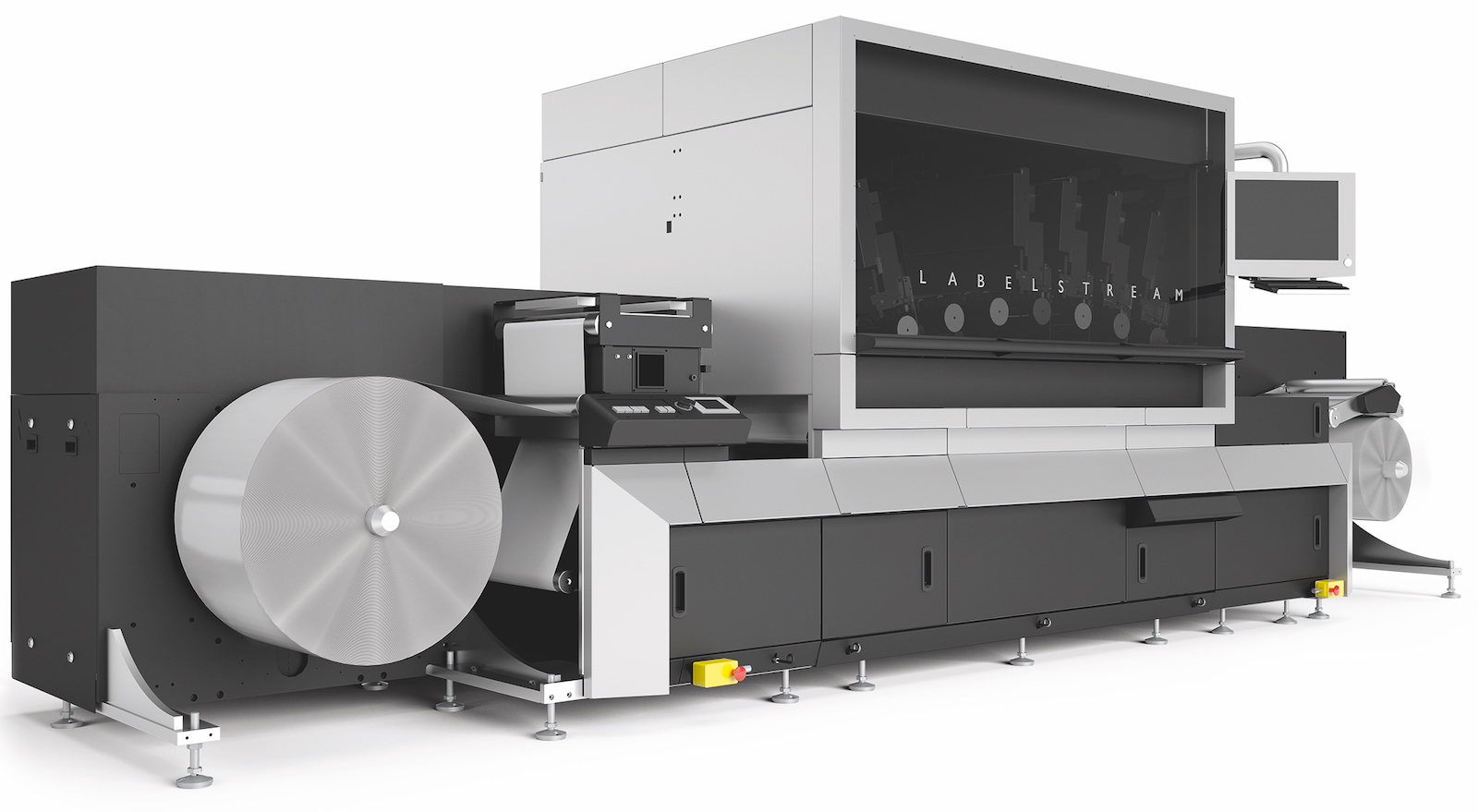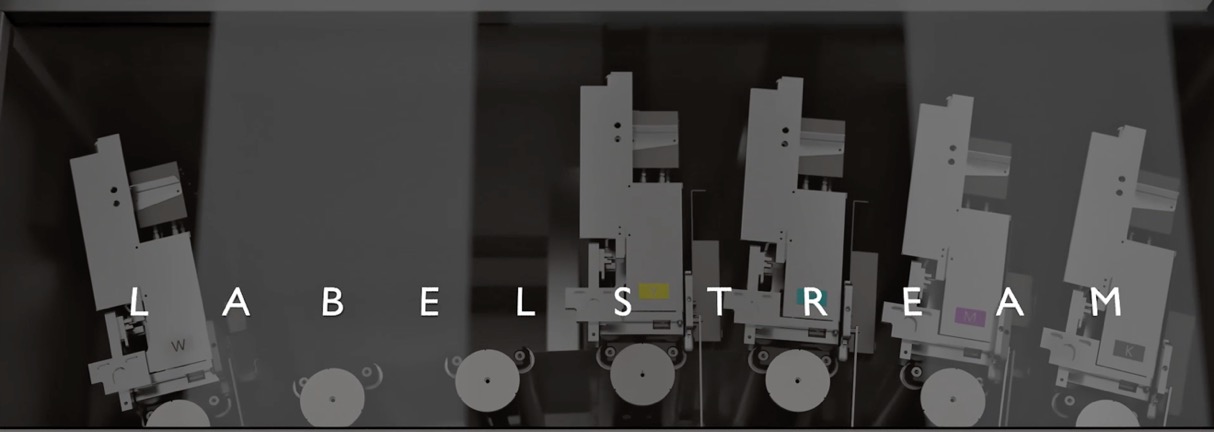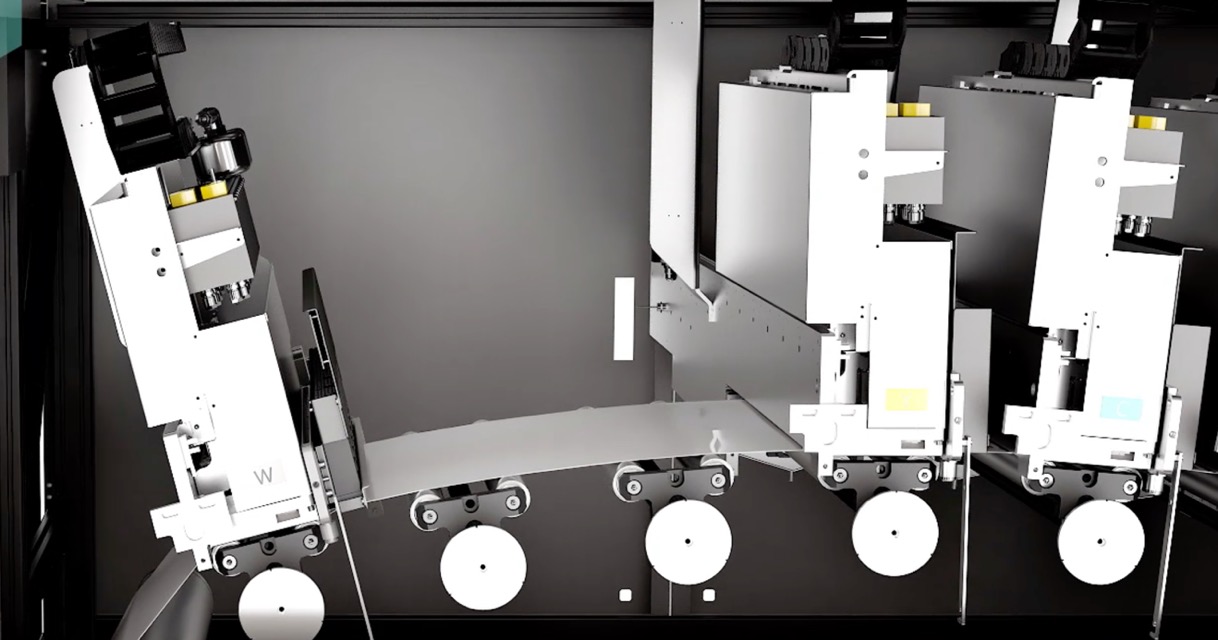Canon Launches Océ LabelStream 4000 5-Color UV Inkjet and Flexo Hybrid Press
Canon is not just entering the label and packaging press market, but challenging the current label press market with the new Océ LabelStream 4000, a 5-color inkjet hybrid UV press that continues to show their strengths in production inkjet.

Océ LabelStream 4000
As the global market leader in production inkjet, with over 1500 continuous web fed installations, we expected to see Canon entering the label and packaging market before long. That time has come with the introduction of the Océ LabelStream 4000 series, the first production inkjet device in this new market for Canon. Since it is the first, they wanted it to be more than a productive press but also a statement of their intent. In looking at the technologies used and the performance design they seem to be on target.
The Océ LabelStream 4000 is a UV inkjet hybrid press that highlights their inkjet expertise with what they are calling their “Inkjet DNA”. To enable them to jump start the development, and take advantage of significant expertise in this new area, Océ selected two strong partners in the development of this new press: Edale Ltd. for the transport and FFEI for the imaging engine.
Transport
UK based Edale Ltd. is a leading provider of narrow and mid web digital, flexographic presses and converting equipment. They have a long history of building modular inkjet presses going back to their partnership on the AGFA Dotrix, one of the first production inkjet presses introduced at drupa 2000.
The LabelStream is built on the modular Edale FL3 flexo transport system as the base, which allows the base configuration to be extended to include the addition of inline flexo color, embellishment and additional finishing options.

Up to 10 flexo stations can be positioned pre-or-post digital to enable digital over printing as well as printing on the adhesive, laminating, foiling or varnishing combined with print in a single process. The finishing can include autoset sheer slitting, and back slitting from job data, as well as sheeting, delivery and a twin rewind.

The Océ LabelStream has a standard digital print speed of 48 m/min and a high-speed mode of 68 m/min, with two print web widths of 13” and 16”. This provides an impressive productivity range of 950 – 1,672 sm/h. In flexo only mode it can print up to 200 m/min, although it is dependent on feature configuration. The LabelStream includes some very interesting functionality designed to reduce set up times throughout the process. It uses a single-point of operation servo-drive technology with auto-registration and impression setting, plus an AVT inspection system for quality control. It has a unique hybrid semi-rotary and full rotary die cutting system, with automatic die loading and unloading that automatically synchronizes the die cutting to the digital print. It also includes a web cleaning and corona treatment station, and a delam/relam module with a turnbar that can be used for printing on the reverse side, especially for printing on adhesives such as in peel and reveal applications.

The press supports a wide range of standard label stocks including on a wide range of standard label stocks including coated/uncoated paper, film, PP, PE, PVC, BOPP and metallized film plus selected special substrates from 40 to 450 microns in the standard configuration and 20 to 600 in the extended configuration.
Imaging Engine
FFEI has also had a very impressive background dating back to their development efforts with Crosfield and Fujifilm on scanners, software and imaging units. Additionally, they have experience in building production inkjet presses including the Graphium, although Canon is quick to point out that this is “not a Graphium”, and while there is some technology cross over, the press design specs prove that out.

The LabelStream includes digital CMYK and digital White as a part of the initial configuration. It uses the new Xaar 2001+GS6U printheads for CMYK and the Xaar 2001+GS12U for the digital White.
These heads provide ink recirculation in the printhead and enables ink to flow past the back of the nozzle during drop ejection keeping the printhead primed for reliability. It prints variable dot sizes at HD mode at a resolution of 720 x 600 dpi with 4 grey levels, at standard graphics mode at 720 x 360 with 3 grey levels, and at high speed mode at 720 x 360 with 3 grey levels. This combination provides the speeds and ink control for a range of imaging requirements.

The use of the GS12U printhead provides the throughput necessary for the larger pigment and higher viscosity digital white ink, and unlike some of the current toner based label presses this provides an opacity > 80% on the Alpine digital white at the full standard speed of 48 m/min, or ~67% opacity on the True White.
In addition to manual cleaning, printhead maintenance is managed with a few different automated cleaning systems, including suction, suction on specific head, wiping, and high?voltage purge.
As is the case in many production inkjet systems today, the lightfast CMYK ink set has a wide gamut that can meet international color standards and reproduce a significant percentage of the Pantone library dependent on media. It uses inter-color UV pining to set the inks between colors with a final UV cure. The ink is provided by Canon under their services portfolio.
Workflow Control
Jointly developed, it provides complete hybrid machine control and support. It may start with the FFEI production workflow system or another of the established production workflow systems (such as ESKO) which supports a hybrid approach. LabelStream features include an inks database with ink aliasing & spot color matching tools, dynamic marks and inkjet barcode optimization. It supports full end to end automation with intelligent job planning for labels and automatic matching of job to die tool inventory.
Applications
Canon is positioning the Océ LabelStream 4000 for self-adhesive label converters who support pharmaceutical, personal care, beverages, industrial and other non-food contact uses. This positions it directly at the fastest growing label market. It may also have some limited use in select flexible packaging applications. This is an impressive introduction into the label and packaging market for Canon/Océ. Especially with estimated 2X productivity and approximately 30% lower running costs compared with toner-based soultions. It will be very interesting to see where they go from here.
Pricing on the LabelStream starts at $760K and can go up to $1.75M. The LabelStream 4000 is expected to roll out to Europe in Q4 of 2018, with the US and other regions to follow. It will be supported by the global Canon/Océ service and support organizations.
